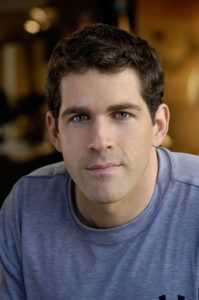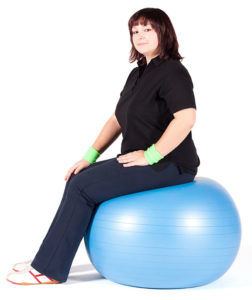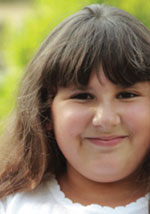People With Overweight/Obesity
Handling Negative Body Image Issues
Thank you for including my voice in the Tricks of the Trade column [January 2014] that discussed body image. Many people have contacted me about the issue, tell- ing me I am an inspiration to them. They want my advice on how to get through this size-zero world living as a plus-size trainer. Wow, I am overwhelmed by the thanks I am receiving. Trainers and everyday women have appreciated my story and say they hope one day to inspire as I am doing. Thank you. I can’t tell you how much this means to me.
Patricia Butler
Queens Village, New York
Best Fat Loss Protocol For Obese Teens?
As obesity continues to maintain a stranglehold on the teenage population, experts search for solutions to the potentially fatal disease. When it comes to exercise, a combination of cardiovascular and strength training is best, according to researchers from Sa?o Paulo.
Embracing the Self-Care Model
Michol Dalcourt is an internationally recognized expert in human movement and performance. He is the founder and director of the Institute of Motion, inventor of the ViPR™ fitness tool, and cofounder of Personal Training Academy Global (PTA Global). An international lecturer and educator, Dalcourt has written numerous articles on human design and function, and he has developed a widely used model for high-performance training.
Family Meals May Beat Obesity
Family meals and their rituals might be an underappreciated battleground for fighting obesity, say Cornell professor Brian Wansink, PhD, and coauthor Ellen Van Kleef, assistant professor at Wageningen University, The Netherlands. Their study appeared online in Obesity on October 1, 2013.
Ownership of Certain Devices Linked to Obesity, Diabetes
Perhaps it’s no surprise that people who own computers, televisions and cars tend to be less active and may be more vulnerable to obesity-related diseases than people without these possessions. Now, researchers from Simon Fraser University in Canada and more than 20 other institutions around the world have collaborated to determine the level of risk that ownership of certain devices presents.
Making Realistic Lifestyle Changes
After serving many years as director of fitness research for the YMCA, Wayne Westcott, PhD, now works as director for fitness research programs at Quincy College in Massachusetts. Westcott has been a strength training consultant for the U.S. Navy, ACE, the YMCA of the USA, and Nautilus. He has also served as an editorial advisor for numerous publications, including The Physician and Sportsmedicine, ACSM’s Health & Fitness Journal, Prevention and Shape, and he’s written more than 20 books on strength training.
Cash or Credit? The Psychoeconomics of Childhood Obesity
It seems that debit card purchases promote the same type of frivolity in children as in adults, but when cards are swiped to pay for school lunches, the impact goes deeper than just free spending. Kids’ food choices also become foolish, according to a study that appeared in the January issue of Obesity (2014; 22 [1], 24–26).
Is Obesity a Socially Transmitted Disease?
If you knew someone in your social circle was making specifically healthy or unhealthy food choices, would it influence your behavior?
It’s likely, say researchers in the United Kingdom who have reported on a meta-analysis of several experimental studies that all examined whether access to information about the eating habits of others influences food intake or choices.
Gender-Based Weight Loss Programs Best For Men?
Sports fans enjoy watching their favorite teams go head- to-head in physical competition. But many male spectators are reluctant to take their own measures to get fit. Researchers suggest that a more male-friendly approach could increase participation.
Preschooler Obesity Risks
According to the Food Research and Action Center website, one quarter of U.S. children aged 2–5 are overweight or obese. Researchers from the University of Illinois, Urbana, believe they have identified the top risk factors for preschool-age obesity.
The investigators surveyed 329 parent-child pairs, asking about demographics, health histories and feeding habits. There were also home visits in which assistants gathered height and weight measurements.
Pilates for Larger Bodies
Pilates is a great tool for every body and provides many benefits for the over- weight. Ten years ago, my naturopath, Carol (who was obese), asked if I would teach her Pilates. I told her I had never worked with anyone so large, and that I would no doubt make many mistakes, but if she would go on the journey with me, I would be honored to teach her.
Helping Clients to Take Small Steps
Gina M. Crome, MS, MPH, RD, is an ACE-certified personal trainer and the owner of Lifestyle Management Solutions, a nutritional counseling and consulting practice that specializes in weight management and disease prevention. Having once weighed more than 300 pounds, Gina has unique insight into the mindsets of those impacted by obesity. Now 172 pounds lighter, she holds dual master’s degrees in clinical psychology and public health nutrition from Loma Linda University, where she received the Selma Andrews Award for Excellence and Professionalism.
Obese Children and Stress Hormones
Today’s obese children aren’t just carrying around extra weight. According to researchers from Erasmus Medical Clinic, at Sophia Children’s Hospital in Rotterdam, The Netherlands, they are also carrying higher levels of the stress hormone cortisol.
The study observed 20 obese and 20 normal-weight children aged 8–12. To determine cortisol levels, researchers took scalp hair samples from each subject. Data showed that obese children had higher levels of hair cortisol than normal-weight children.
Establishing Standards
Brian Biagioli is the executive director for the National Council on Strength & Fitness (NCSF) and a founding member of the Coalition on Registration for Exercise Professionals (CREP). A longtime leader in the health and fit- ness industry, Brian also serves as the graduate program director for strength and conditioning in the department of kinesiology and sport sciences at the University of Miami.
A Best Type Of Exercise For Obese Girls?
The top titans of exercise—resistance exercise and cardiovascular exercise—continue to duke it out for the title of best fitness protocol. When it comes to obese girls, researchers believe they have a champion: cardio.
To determine this outcome, the researchers recruited 44 obese girls, aged 12–18, and assigned them to RE, CE or a nonexercise control group for 3 months. Measures included body weight, waist circumference, oral glucose, insulin sensitivity, body fat, cardiorespiratory fitness, muscular fitness and more.
What to Avoid During Initial Phases of Exercise
These tips come from a larger article about building self-efficacy in obese clients. Use the following tips to help your clients avoid risks when starting a new exercise program.
The Facts on Obesity
The following obesity facts presented by Casazza et al. are well supported by scientific evidence and offer practical guidance for personal trainers.
Science Shows Yo-Yo Dieters Probably Can’t Win
You likely have clients who
have been dieting most of their
adult lives. A study published
in the International Journal of
Obesity (2013; doi: 10.1038/ijo.2013.138)
New Concern for Overweight and Obese Children
Here is another reason to encourage children to maintain a healthy weight: According to a Kaiser Permanente Southern California study, children who are overweight or obese are at significant risk for developing hyper- tension.


















